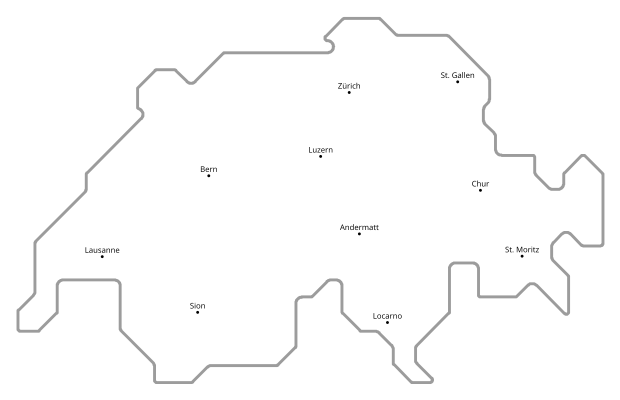Database
General Information
This image database includes microscopic images of cross-sections of blades of grass culms and leaves together with a morphological description of approx. 1,231 species from 27 monocotyledon families from Central Europe, Central Asia and the USA.
Characteristic features can be seen in the culms and leaves, some of which allow ecological interpretations.
The stiffening elements are clearly visible in the images taken with polarized light (images with a black background), which allows a differentiated description of this anatomical feature.
Each species is described with its characteristic anatomical features. The complete list of the features used can be found in the book “Microscopic features of monocotyledonous plants” (Schweingruber & Berger, 2019).
Examples of features are presented here.
Material and methods
The material used originates from Reto Nyffeler and Franziska Schmid (Combined Herbaria of the University of Zurich and the ETH Zurich), Jiri Dolezal (Institute of Botany, Czech Academy of Sciences, Trebon, Czech Republic), Vojtech Lanta (Institute of Botany, Czech Academy of Sciences, Trebon, Czech Republic), Jiri Danihelka (curator of Brno Herbaria, Masaryk University, Brno, Czech Republic), Kirill Korznikov (Botanical Garden-Institute of the Far Eastern Branch of the Russian Academy of Sciences and Institute of Botany, Czech Academy of Sciences, Trebon, Czech Republic), Tatiana Petrenko (Botanical Garden-Institute of the Far Eastern Branch of the Russian Academy of Sciences), Katja Rembold (Herbarium of the University of Bern), Vera Markgraf (Northern Arizona University, Flagstaff, Arizona, USA).
The samples were taken from the central area of the stalks and leaves. The cross-sections were made with a microtome or by hand with a razor blade under a stereomicroscope, then stained with saffranine and astra blue for a few minutes, dehydrated with alcohol and embedded in Canada balsam ("Preparation Techniques for Plant Stem Analysis" (Gärtner & Schweingruber, 2013). The digital images were obtained with a Canon camera EOS 650D camera mounted on an Olympus BX51 microscope with transmitted and polarized light at 100× and 400× magnification. This method distinguished particularly well lignified (red) and non-lignified (blue) structures.
References
- Schweingruber F.H., Berger H. 2019. Microscopic features of monocotyledonous plants. Features of culms, flower stalks, stems and rhizomes. Vol. IV. Verlag Dr. Kessel, Remagen, Germany
- Gärtner H., Schweingruber F.H. 2013. Preparation Techniques for Plant Stem Analysis. Verlag Dr. Kessel, Remagen, Germany
